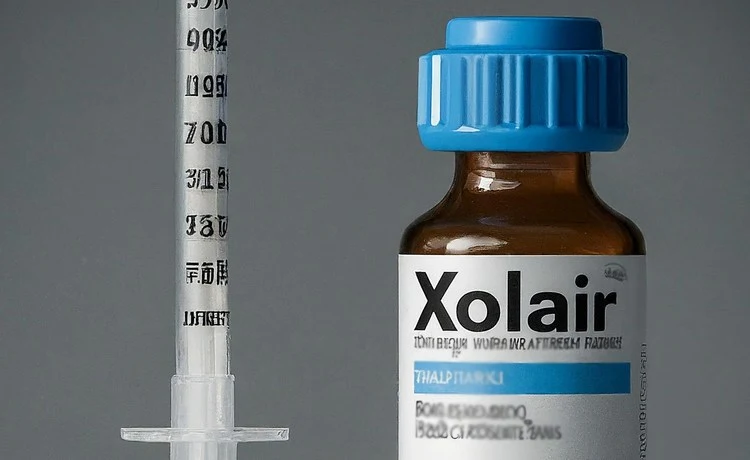Food allergies can change daily life—affecting meals, social events, and peace of mind. Xolair (generic name: omalizumab) is a monoclonal antibody that targets IgE, the antibody central to many allergic reactions. Recent high-quality clinical research shows that Xolair can raise the threshold for reaction to multiple foods, offering meaningful protection against accidental exposures for some patients.
What is Xolair (omalizumab)?
Xolair is an FDA-approved monoclonal antibody originally used for allergic asthma, chronic spontaneous urticaria, and nasal polyps. In 2024–2025, clinical trial data supported its use to reduce allergic reactions from accidental exposure to one or more IgE-mediated food allergens in children and adults (age 1 and up). Xolair is administered by injection at regular intervals under medical supervision.
How Xolair Works
Xolair binds to free IgE antibodies in the bloodstream, preventing IgE from attaching to receptors on mast cells and basophils. This reduces the ability of these immune cells to trigger allergic cascades (hives, swelling, bronchospasm, and anaphylaxis) when the person is exposed to food allergens.
Clinical Evidence — What the Trials Show
Large randomized trials found that a 16–20 week course of omalizumab increased the amount of allergen people could tolerate (the reaction threshold) for multiple foods, including peanut, milk, egg, wheat and tree nuts. The studies reported fewer moderate-to-severe reactions in treated patients versus placebo, and regulatory authorities have authorized Xolair for this indication based on those data.
Key study highlights:
- A Phase III randomized trial showed omalizumab increased tolerance thresholds to several common food allergens after 16 weeks of treatment. (See major trial published in the New England Journal of Medicine.)
- Follow-up data and multi-center reports indicated omalizumab reduced the frequency and severity of reactions from accidental exposures in many participants.
Who Might Benefit?
Xolair is indicated for people with confirmed IgE-mediated food allergies who are at risk of severe reactions from accidental exposure. It may be considered for patients with multiple food allergies or those who remain highly sensitive despite best avoidance practices. Treatment decisions should be individualized—made between a patient (or caregiver) and an allergy specialist.
Limitations, Risks, and Realistic Expectations
- Not a cure: Xolair does not remove the allergy—patients must continue to avoid known allergens unless advised otherwise by their allergist.
- Variable response: While many patients show improved tolerance, not everyone responds equally.
- Side effects: Injection-site reactions are common; rare but serious reactions such as anaphylaxis have been reported, which is why administration and monitoring recommendations must be followed.
- Cost & access: Treatment can be expensive; coverage depends on local healthcare systems and insurance. Speak with your provider and insurer about coverage options.
Practical Advice
If you or your child are considering Xolair:
- Talk to an allergist experienced in treating food allergies.
- Confirm diagnosis with appropriate testing (skin prick tests, specific IgE testing) and a clinical history.
- Discuss risks, benefits, monitoring plans, and the need to continue avoidance and carry emergency medication (epinephrine auto-injector) as instructed.
How Xolair Fits with Other Treatments
Xolair can be used as monotherapy for reducing reactions from accidental exposure, and it is also being studied in combination with oral immunotherapy (OIT) to improve safety and tolerance during desensitization protocols. Comparative studies indicate omalizumab may offer strong protection with fewer adverse effects than OIT alone in some settings—again, decisions should be made with a specialist.
Read also: Lupine Allergy: What You Need to Know
Conclusion
Xolair (omalizumab) represents an important advance in food-allergy care. For many patients, it increases the threshold for allergic reactions and provides a safety margin against accidental exposure. It’s not a cure, and treatment requires careful medical oversight, but the evidence to date supports Xolair as a new and meaningful option for people living with IgE-mediated food allergies.
Disclaimer: This article is informational only and is not medical advice. Always consult a qualified healthcare provider before starting or changing treatments.


